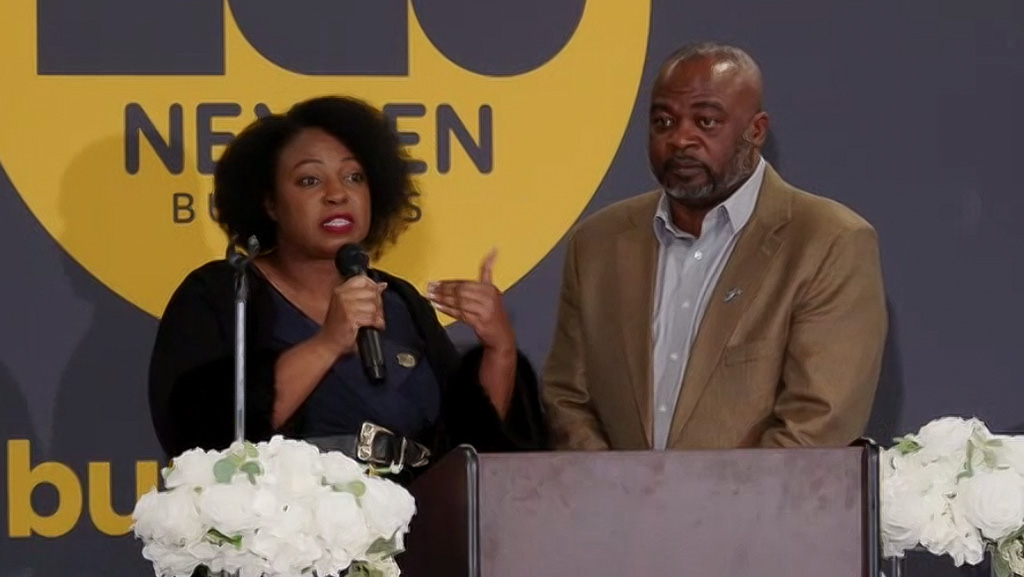Over the past decade, the community benefits movement in Toronto has come a long way.
The Toronto Community Benefits Network (TCBN) marked its 10th anniversary March 21 with a celebration at the United Steelworkers Hall in Toronto.
The theme was Leaving No One Behind. The event coincided with the International Day for the Elimination of Racial Discrimination.
The TCBN was officially incorporated on March 17, 2014.
At the celebration, executive director Rosemarie Powell highlighted some of the accomplishments the group achieved over the years.
“We built on a movement that was already happening, a movement that was happening with our Indigenous communities in Canada but also in the United States and the U.K.,” Powell told the crowd.
“The first initiative was the Eglinton Crosstown LRT…We were able to move on to have community benefits on the Finch West LRT and then community benefits for the Rexdale community who had been fighting 10 years before TCBN even started. They wanted community benefits on Casino Woodbine.”
The group was also instrumental in getting a community benefits framework at the City of Toronto.
“The City of Toronto is doing a stellar job in terms of helping to really integrate community benefits in policy and practice as it relates to how the city builds,” said Powell.
“With that, we were able to get the five pilots established by the provincial government for community benefits. The movement is growing and it’s growing because of you, all of us coming together and really looking at the challenges ahead of us and saying what can we do to really sink our teeth into this. Community Benefits Agreements became that one solution that we can all agree on.”

Magic of the movement
Keynote speaker Julian Gross, an expert in community benefits based in the United States, discussed the issues going on in the world and feeling like there is no way to impact them.
“The way that works for me, and I think for a lot of people when they’re feeling that frustration and when they’re seeing injustice and racism in the world, is to throw effort into something that you can get your hands around, that is close to you and is close to your community. Where change can happen that you can see the results of and you can really influence,” he said. “I think it’s safe to say that every one of you that is part of this network, part of this movement in Toronto, you are the people who are putting effort in and are thinking about your community.
“This is the magic of the movement, this is the secret sauce that has led to progress, real progress in the community benefits movement over a period of 25 years or more.”
The celebration gave him an opportunity to step back and look at the achievements that have occurred in Toronto because of the sustained efforts of the community labour coalition, he said.
Some historical context
“The first CBA that went by that name was in about the year 2002 and then it was some years after that the ideas and the concepts started filtering into Toronto,” he noted.
“There was this conversation that was referenced several times today in Los Angeles where a delegation of folks came out…to a conference where people were talking about these CBAs and that planted the seeds. That turned into the initial formation of the Toronto Community Benefits Network.
“It’s grown from these initial concepts into this incredible network. You’ve gone from the concepts being really new and these learning trips to 10 years of advocacy, 10 years of network building, 10 years of power building for the community benefits network. It’s a real testament to the power of this movement and the power of the people in this room to build things this way.”
He explained how community benefits usually focus on massive projects that “happen” to neighbourhoods, redevelopment plans that may include 30,000 units of housing, a giant stadium, massive rail lines, worth billions of dollars.
“I think the sea change that we’ve seen over the last 25 years is that it used to be that those things just were things that would happen to a low income community,” he pointed out. “People in those communities did not feel they had a way to influence those things. Then when promises were made about benefits that were going to be delivered to that community from a big project like this no one believed it. No one believed it because it usually didn’t happen.
“The community benefits movement through these tools like CBAs and project labour agreements…has a way to take the interest and the opportunities that can come out of these big projects and bring them into something that is legal, that is binding, that is accountable…and that can be enforced over time. It’s a way to make those promises real.”
Follow the author on X/Twitter @DCN_Angela.






Recent Comments